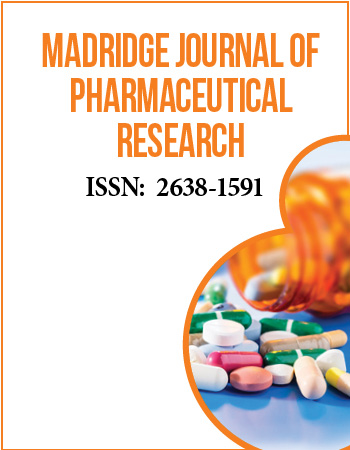International Conference on Medicinal and Pharmaceutical Chemistry
December 5-7, 2016 | Dubai, UAE
Structure-guided discovery of potent, dual acting human parainfluenza virus haemagglutinin-neuraminidase inhibitors
1Institute for Glycomics, Gold Coast Campus, Griffith University, Australia
2RCSI Royal College of Surgeons in Ireland - Medical University of Bahrain, Bahrain
Human parainfluenza virus (hPIV) is one of the leading causes of respiratory tract disease in infants and children, estimated to be responsible for one third of 5 million cases per year in the United States alone. A glycoprotein called haemagglutinin-neuraminidase (HN) at the virus envelope encompasses three key functions in virus infection and spread. The hPIV HN recognizes and attaches to sialoglycoconjugates present on the host cell and subsequently activates the fusion machinery, thereby facilitating infection. Upon virus replication, hPIV HN cleaves sialic acid from host cell receptors allowing viral spread to uninfected cells. Despite continuous efforts, neither antiviral drugs nor vaccines are approved for clinical use against parainfluenza virus to date and this reinforces the urgent need for new therapeutic discovery strategies. The viral surface glycoprotein HN represents an ideal target for the development of the urgently needed antiviral agents. We have used a multidisciplinary approach to discover designer potent inhibitors that target a novel structural feature associated with the human parainfluenza virus type 3 surface glycoprotein haemagglutinin-neuraminidase. This novel feature is the flexible 216-loop which can move to a more open form creating a cavity (the 216-cavity) that can be occupied by properly designed inhibitors. We have utilized molecular dynamics simulations to simulate binding of the newly designed inhibitors at the protein and to test their capacity to force the 216-loop open and occupy the created 216-cavity. The designed dual acting designer inhibitors represent the most potent designer compounds and efficiently block both human parainfluenza virus cell entry and virion progeny release. We have also defined the binding mode of these inhibitors in the presence of whole inactivated parainfluenza virus type 3 and recombinantly-expressed haemagglutinin-neuraminidase by Saturation Transfer Difference NMR spectroscopy. Collectively, our study provides a novel anti-parainfluenza virus pre-clinical candidate and new direction towards the discovery of potential anti-parainfluenza drugs.
Biography:
Dr. Ibrahim El-Deeb was graduated from the Faculty of Pharmacy in Mansoura University, Egypt in 2001. He earned his Masterʼs degree in Medicinal Chemistry in 2006 from the same university and in the following year (2007), he was awarded a PhD scholarship from Korea Institute of Science and Technology in South Korea. During his PhD, he worked on the development of novel kinase inhibitors as anticancer agents. In late 2010, Ibrahim joined the Institute for Glycomics at Griffith University, Australia as a postdoctoral researcher. In 2012, he was awarded a Griffith University Postdoctoral and Research Fellowship (GUPRF) to support his research with in the von Itzstein group where he led the medicinal chemistry research targeting parainfluenza virus. In September 2016, Ibrahim moved to RCSI-Bahrain where he was appointed as a lecturer in Chemistry and where he is continuing his research collaboration with the von Itzstein group in Australia.


